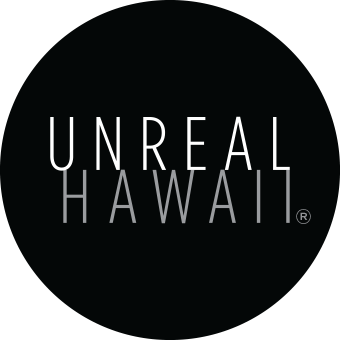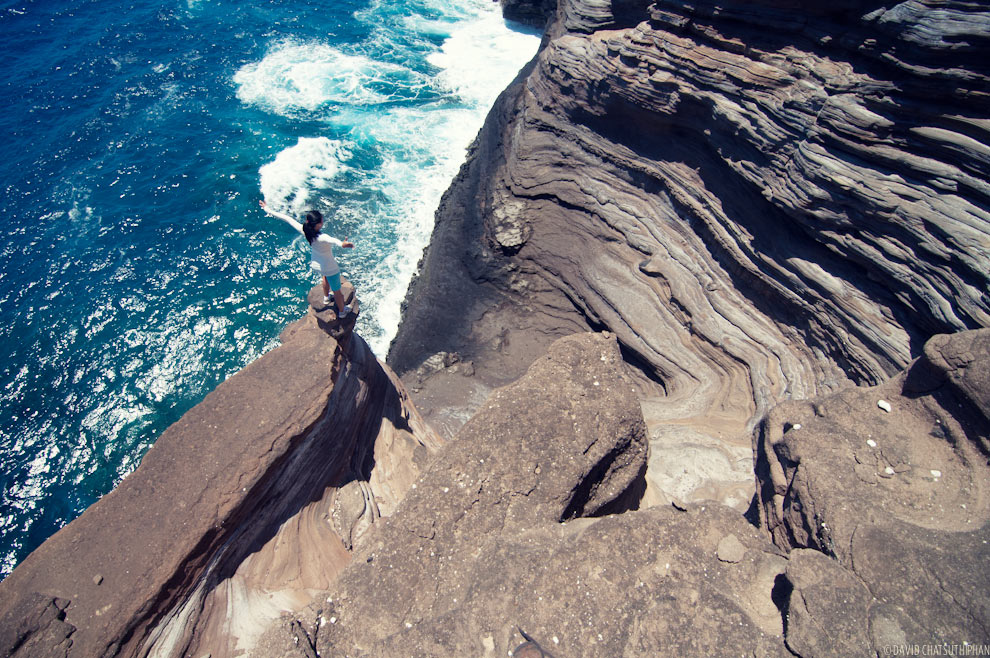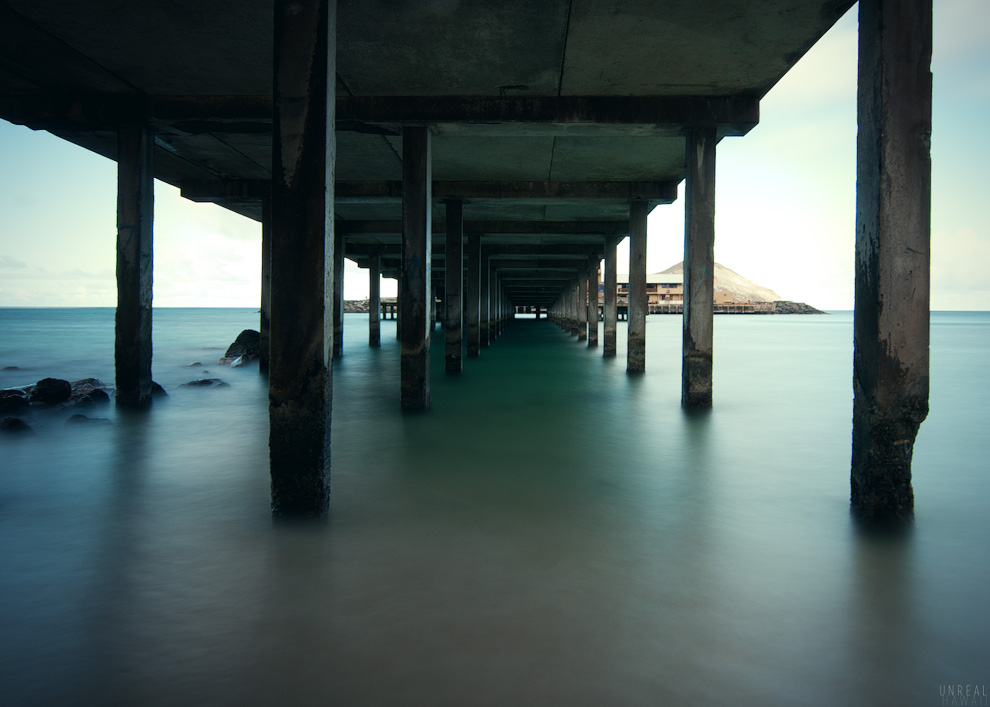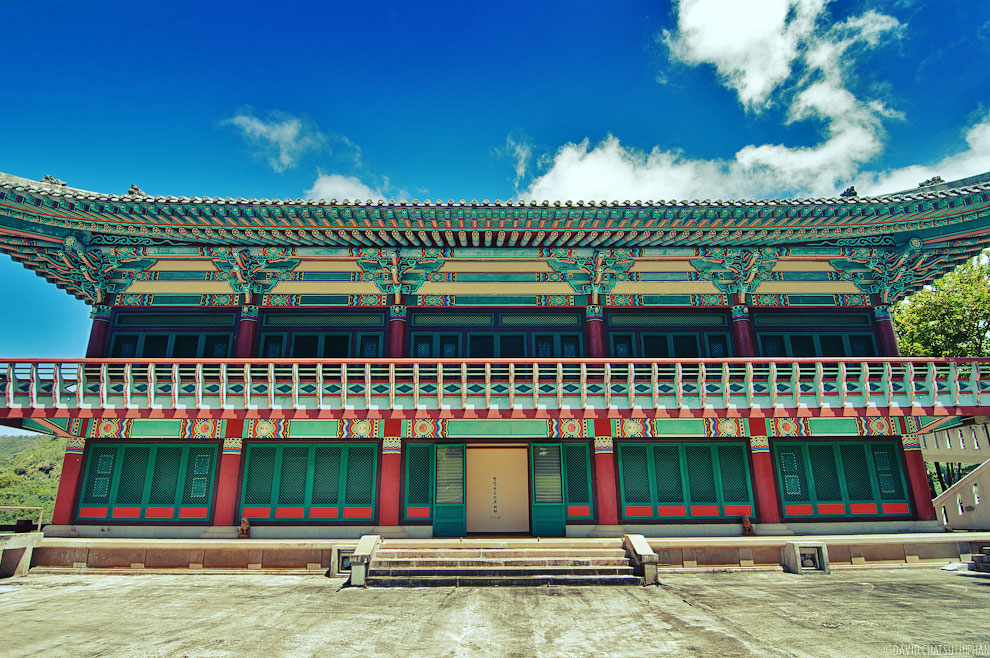
Shelter.
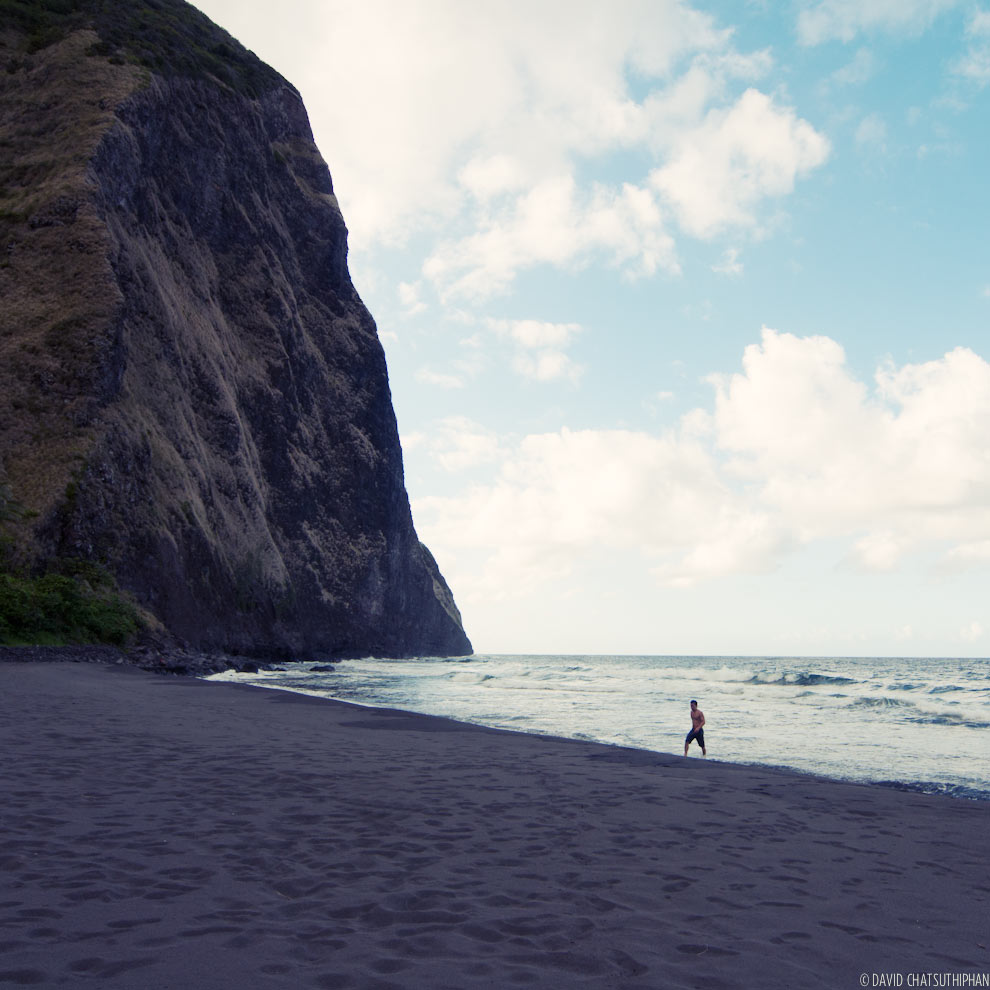
The beach.
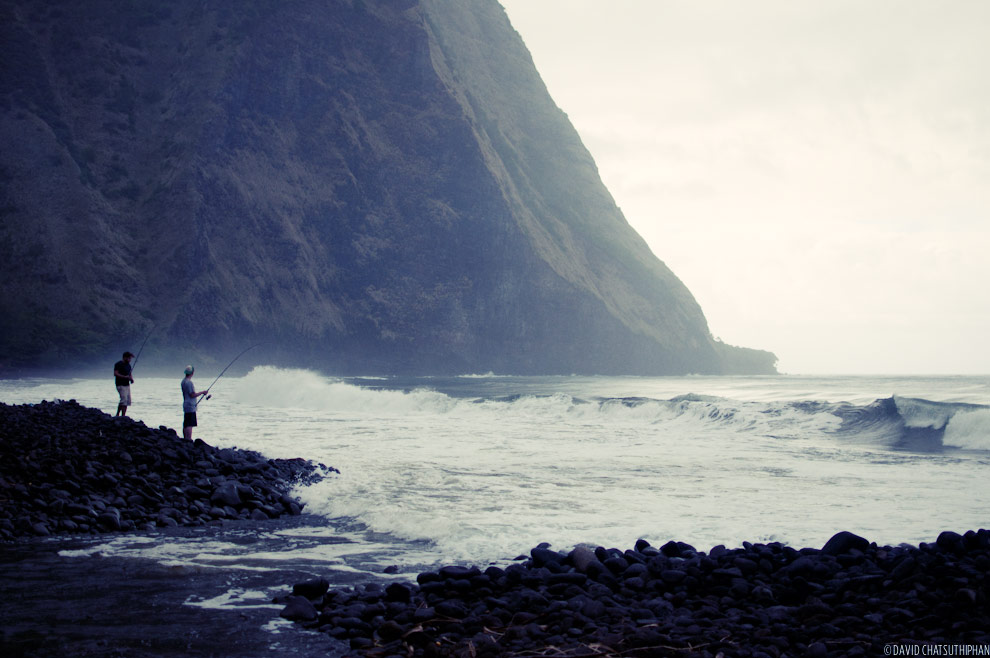
Fishing.
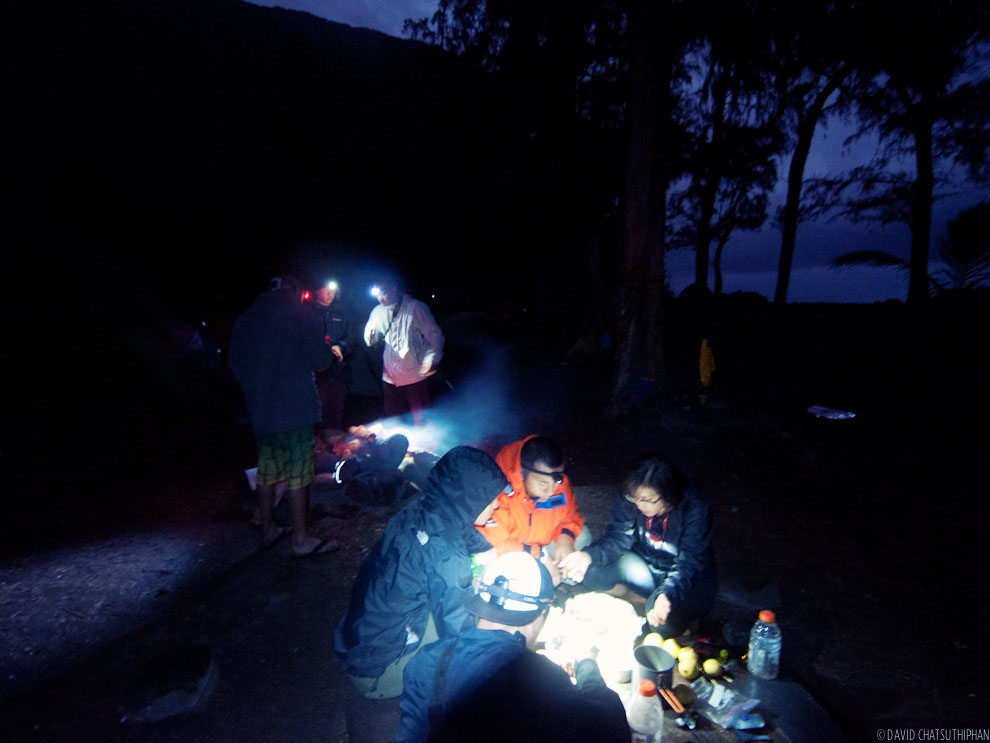
This is the third post in a five-part series on Waimanu. See more:
- PART 1: Waimanu Valley via the Muliwai Trail
- PART 2: Waimanu Valley Waterfalls
- PART 4: Waimanu Valley to Waipio Valley
- PART 5: Waimanu Valley Video Recap
Eating.
There are 9 campsites in Waimanu Valley. They sit just off a beautiful black sand beach that spans the opening of the valley. Rock walls (about a couple feet high) outline each site.
Camping in Waimanu Valley is different for everyone. Your experience all depends on what you bring. Those that kayak over will have much more luxuries than backpackers. But even if you backpack to Waimanu Valley like we did, I’d encourage you to bring some treats for yourself. It’s well worth the extra weight in your pack.
In this post I’ll show you what you can see and do around the campsites in Waimanu Valley.
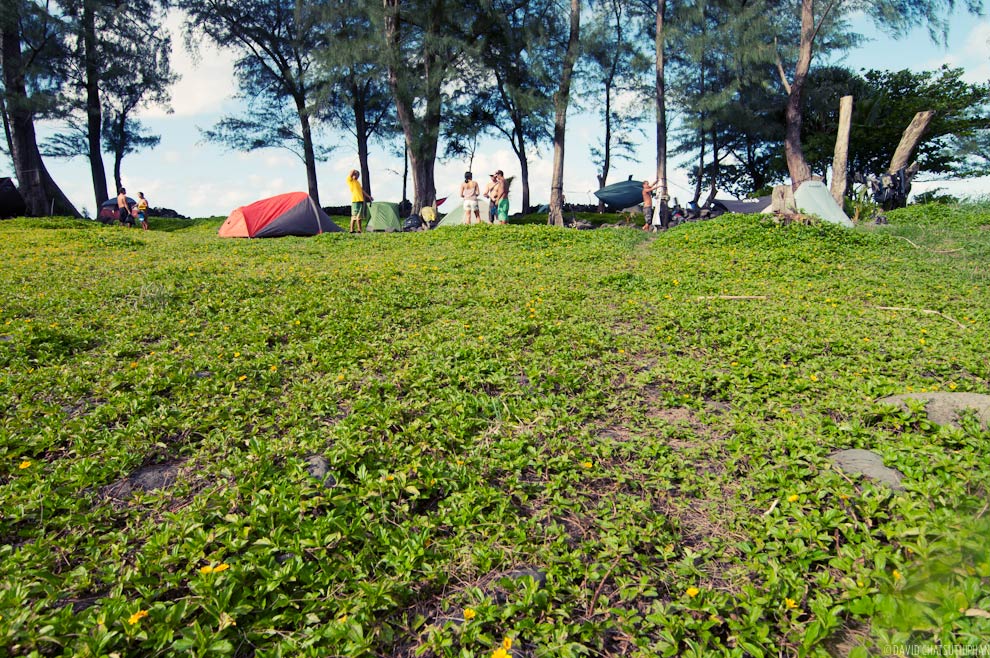
We had campsite #2. It’s the largest of the campsites you are allowed up to 12 people. (The names of each person in your group must be listed on your camping permit.)
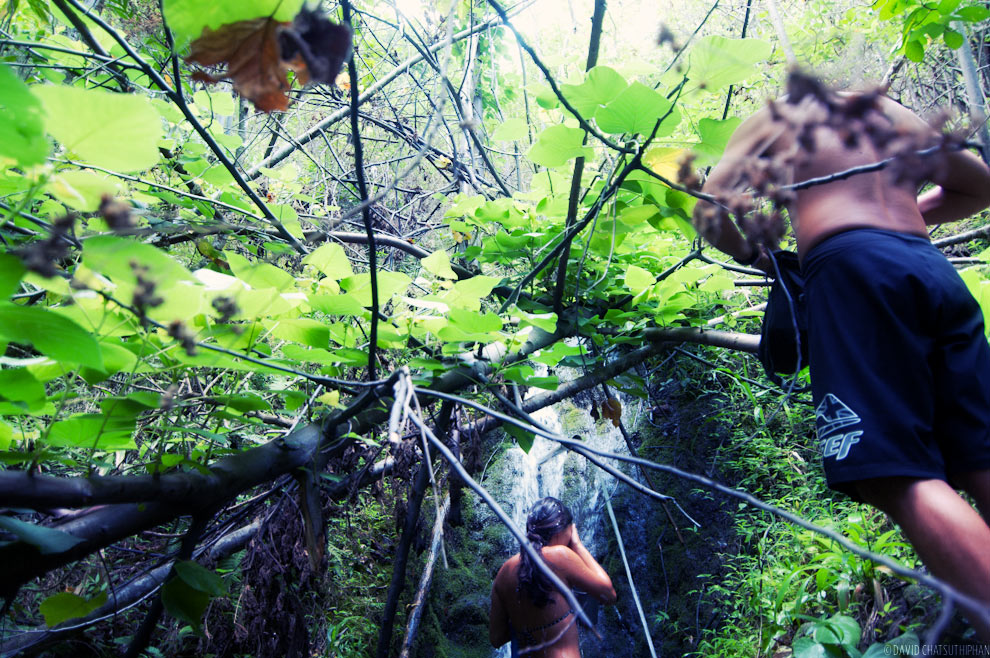
Fresh water is available at a nearby spring. You can shower here and fill up your water jugs. It’s a short 10 minute walk from camp. Just ask around and people will tell you how to find it.
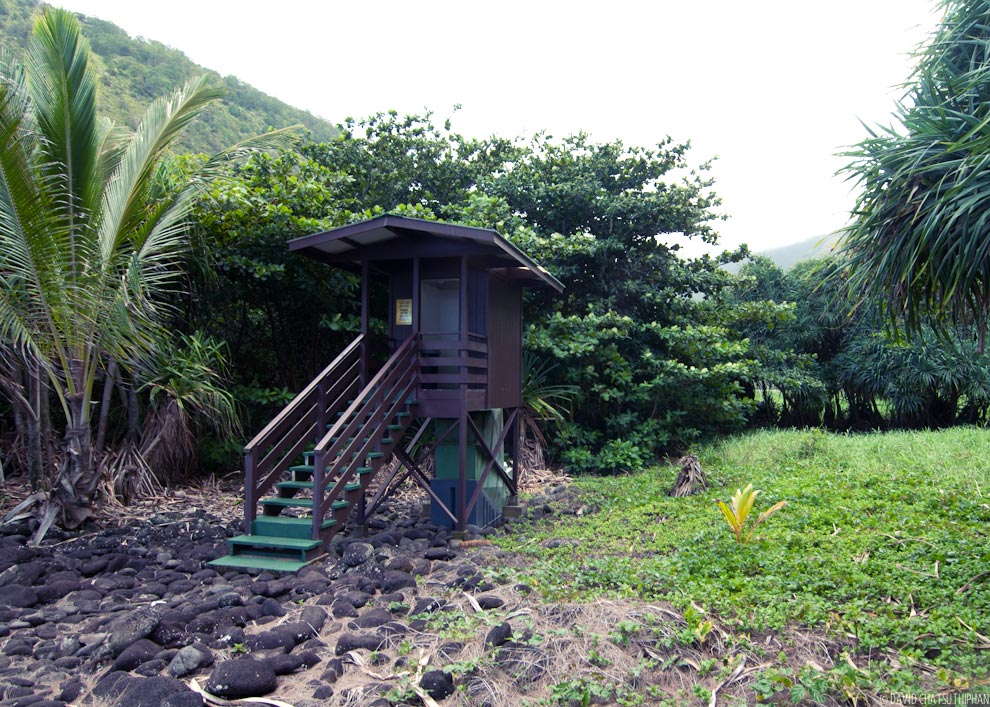
One pleasant surprise we found was this. Toilets. And they were somehow pretty clean. These are called “composting outhouses”. The inside of the outhouse looks like a regular public restroom, except there’s no sink. And instead of flushing, you grab a bunch compost (leaves and kukui nut shells) from a bin inside and throw it down the toilet.
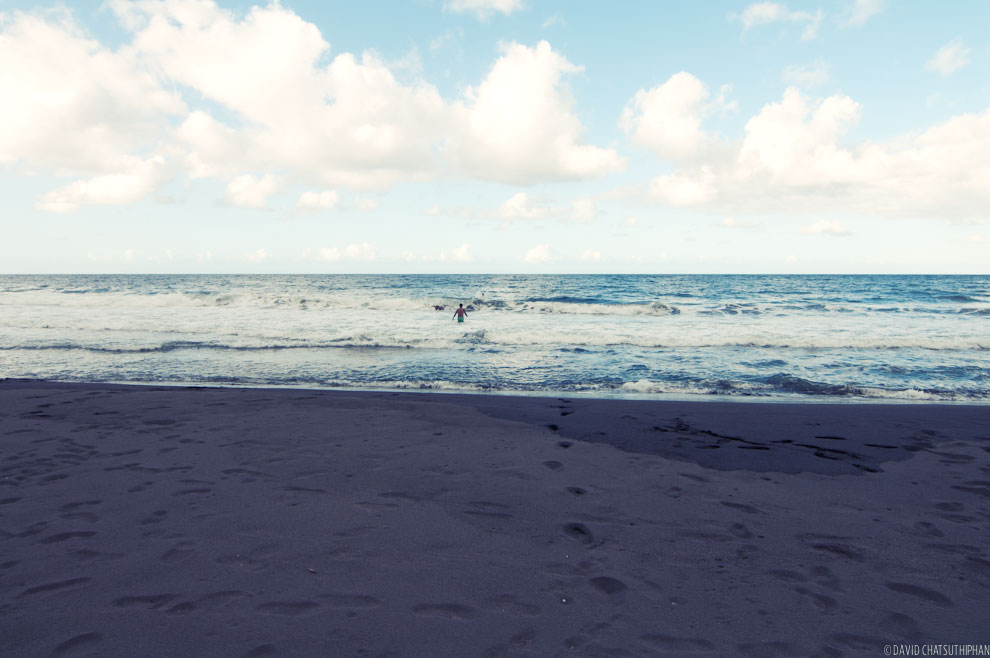
Just steps away from the campsite is this black sand beach. There’s a fun shore break you can body surf in. It’s manageable as long as the waves are small.
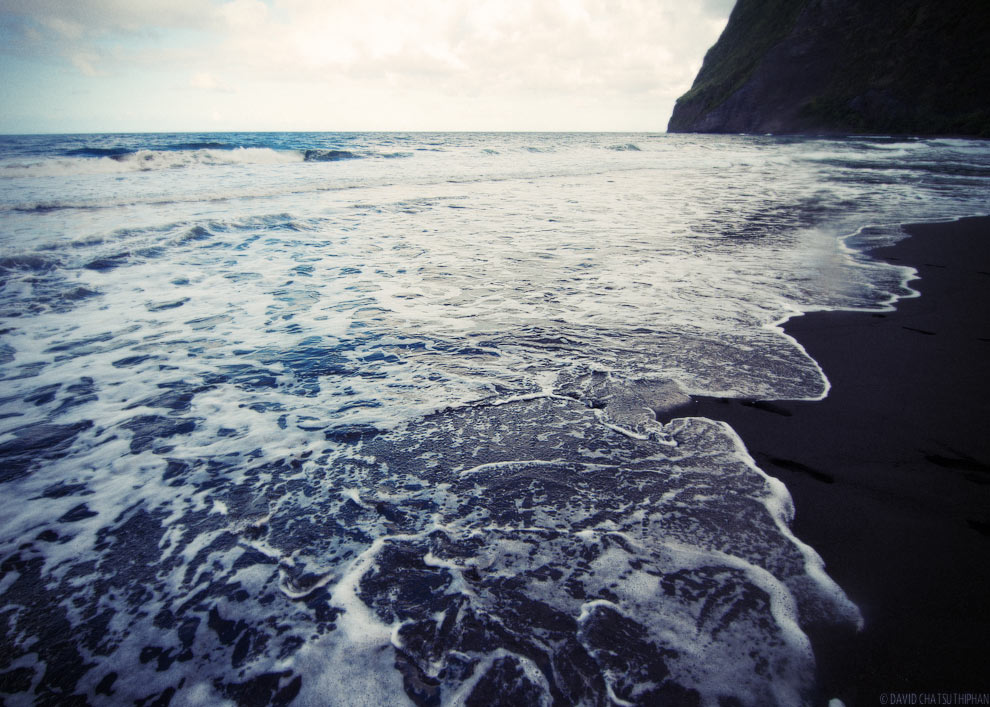
This was the first black sand beach I’ve been to in Hawaii.
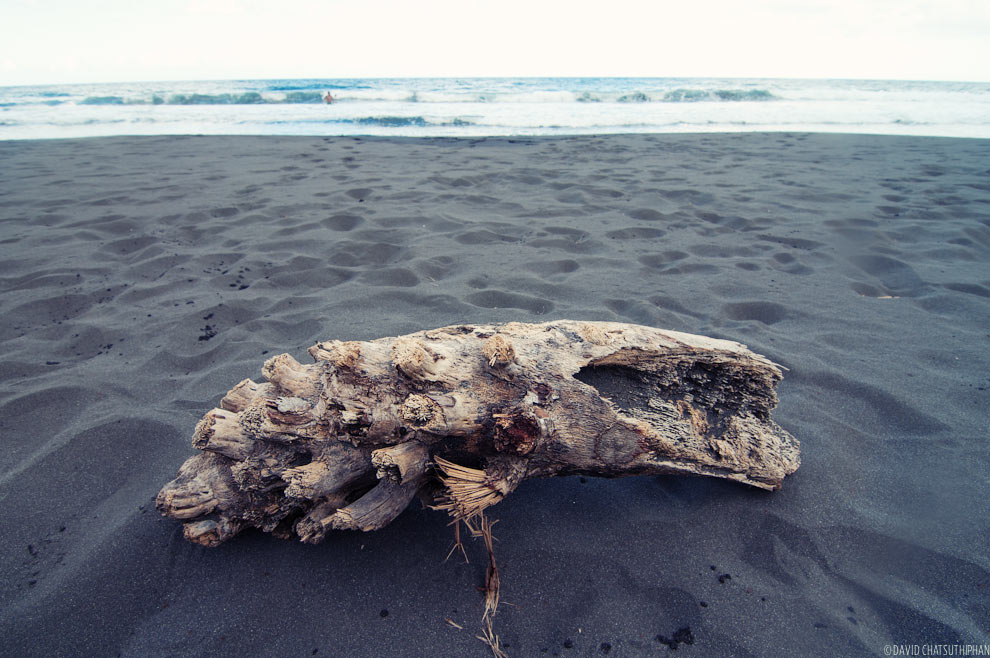
It was beautiful.
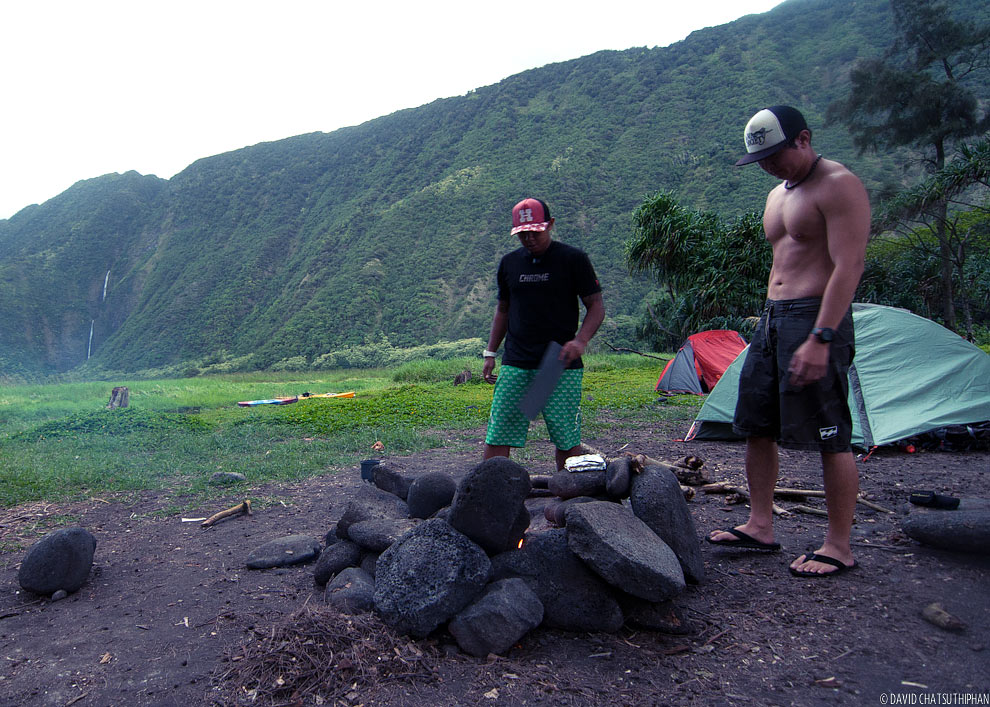
Someone had made a small fire pit in the center of camp already.
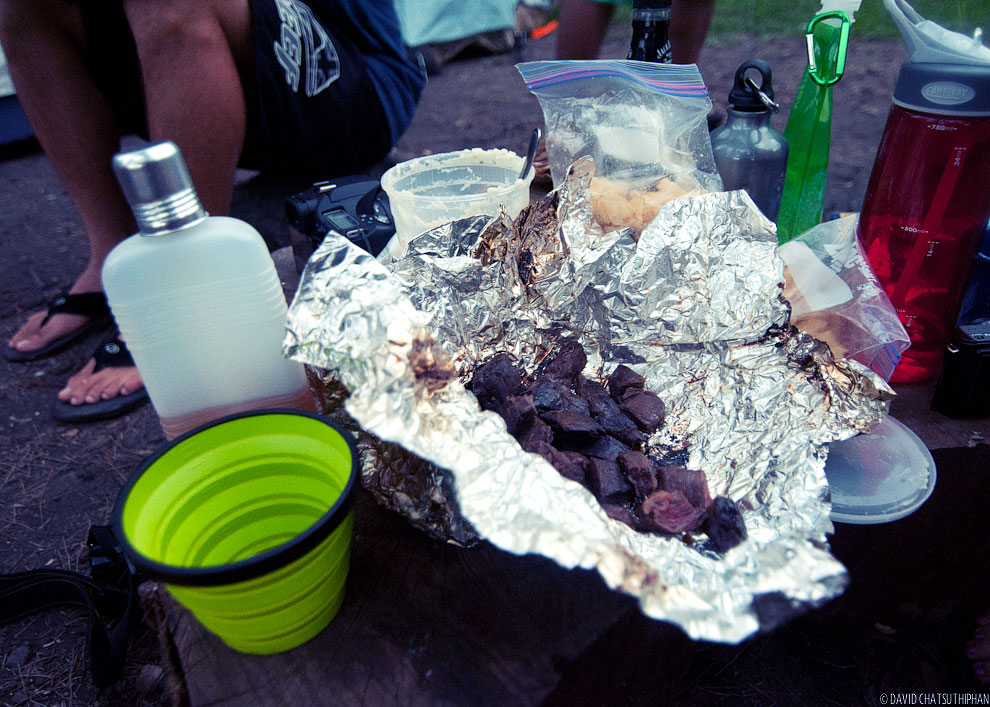
On our first night, for dinner, we cooked up some steaks and mashed potatoes. This was one of our many “treats”. Another treat can be seen in my camp flask. That would be booze.
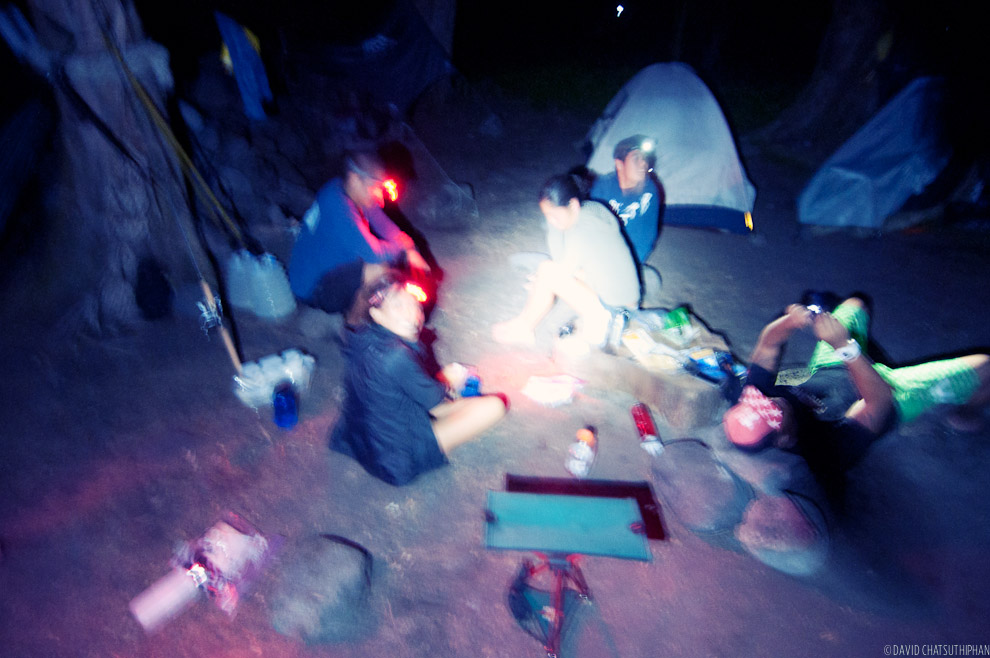
A few others brought bottles as well and this first night turned in to a bit of a party.
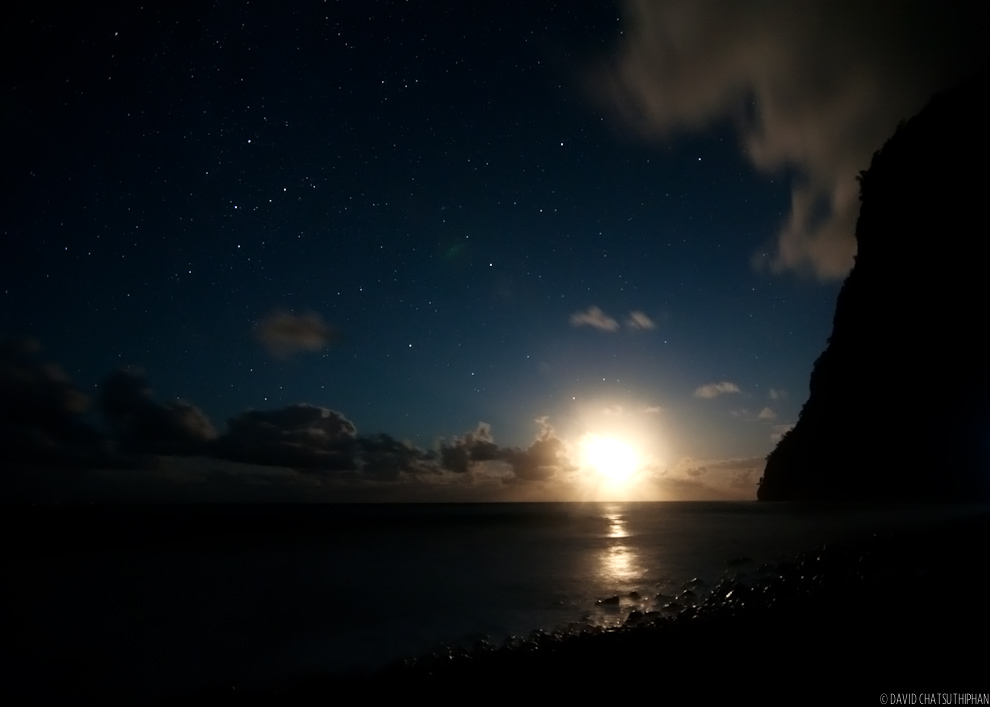
When midnight rolled around on the first night, we witnessed a moonset. Yep, this is the moon. When it gets close to the horizon, the moon takes on a golden hue.
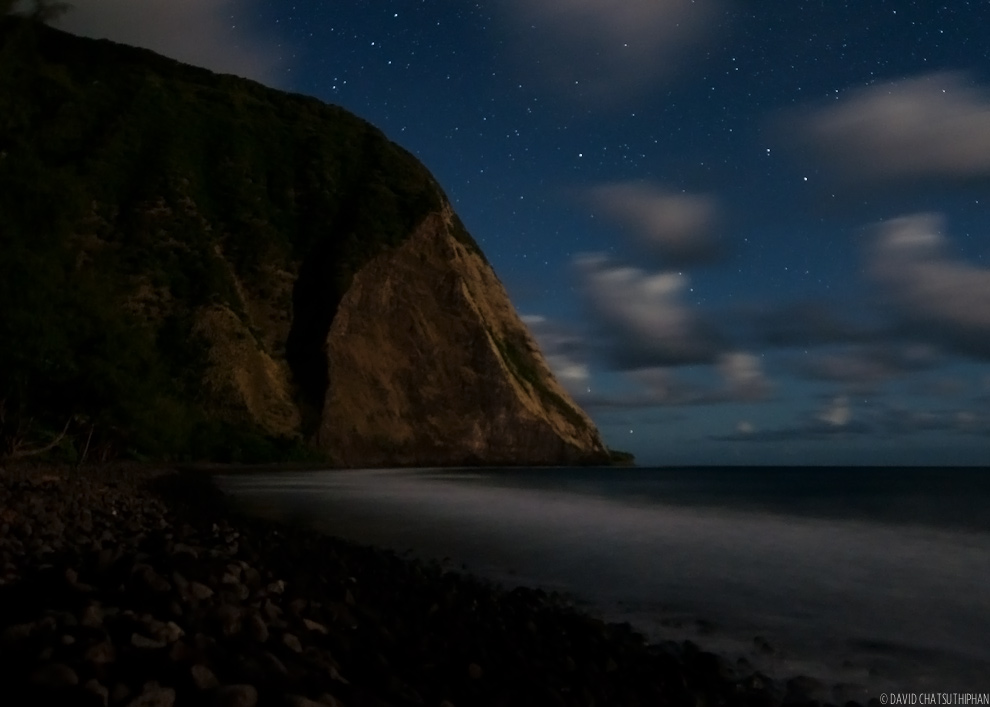
Much of the beach was lit up.
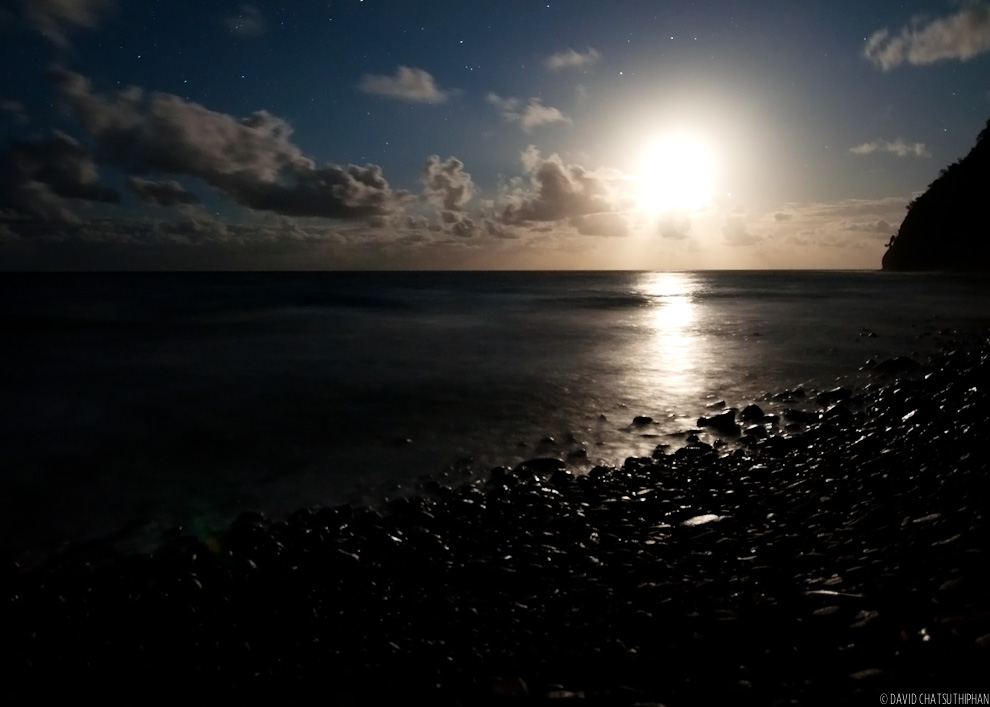
These photos are of course long-exposures but even seeing it with the naked-eye, the scene was surreal.
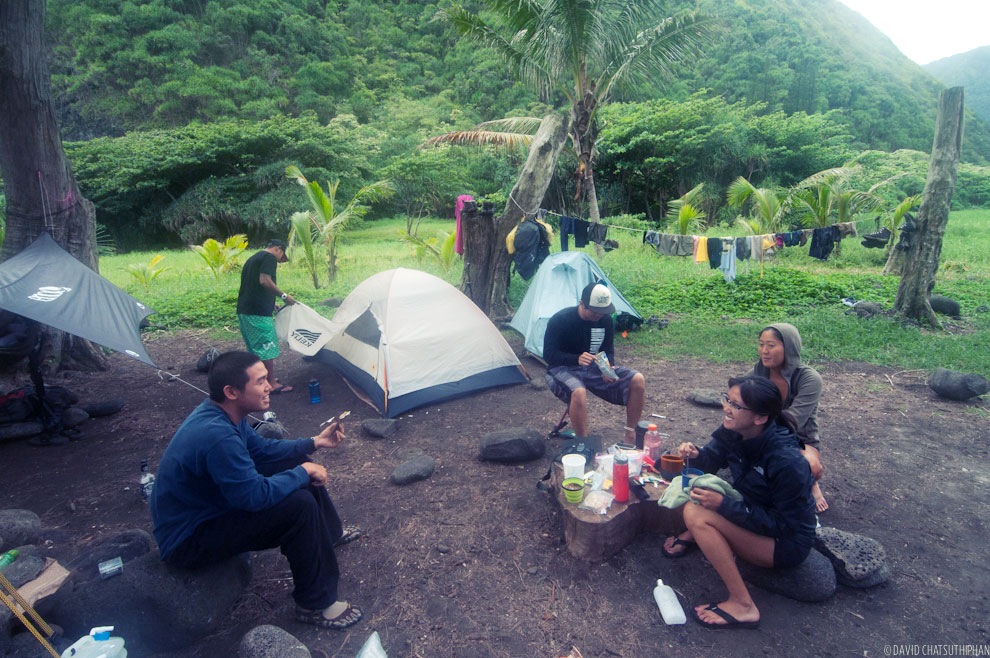
The next morning we had coffee, hot cocoa and oatmeal for breakfast.
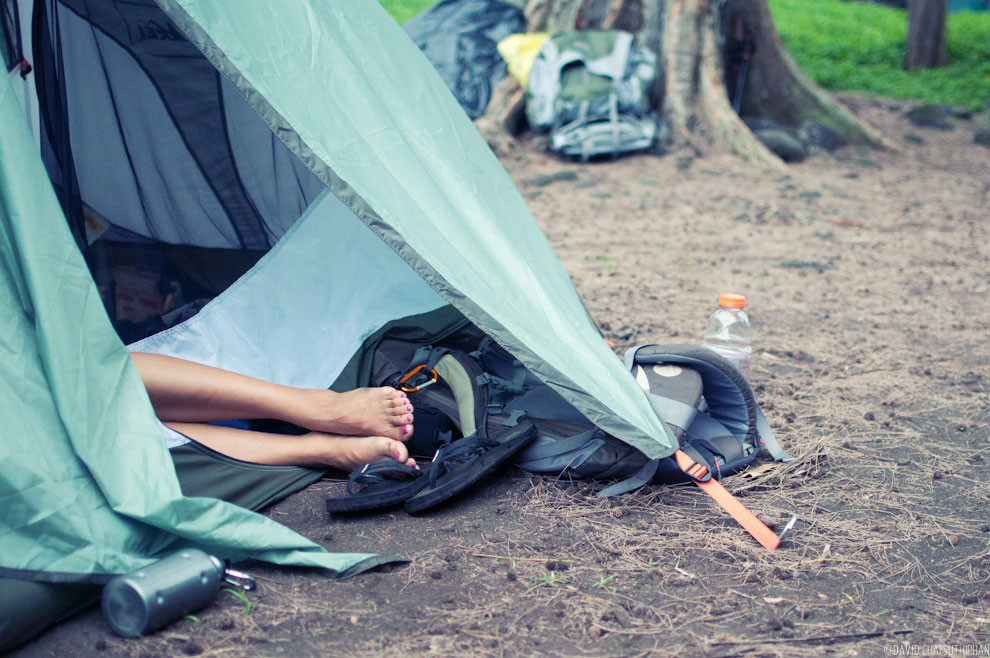
Some need a bit more time to wake up.
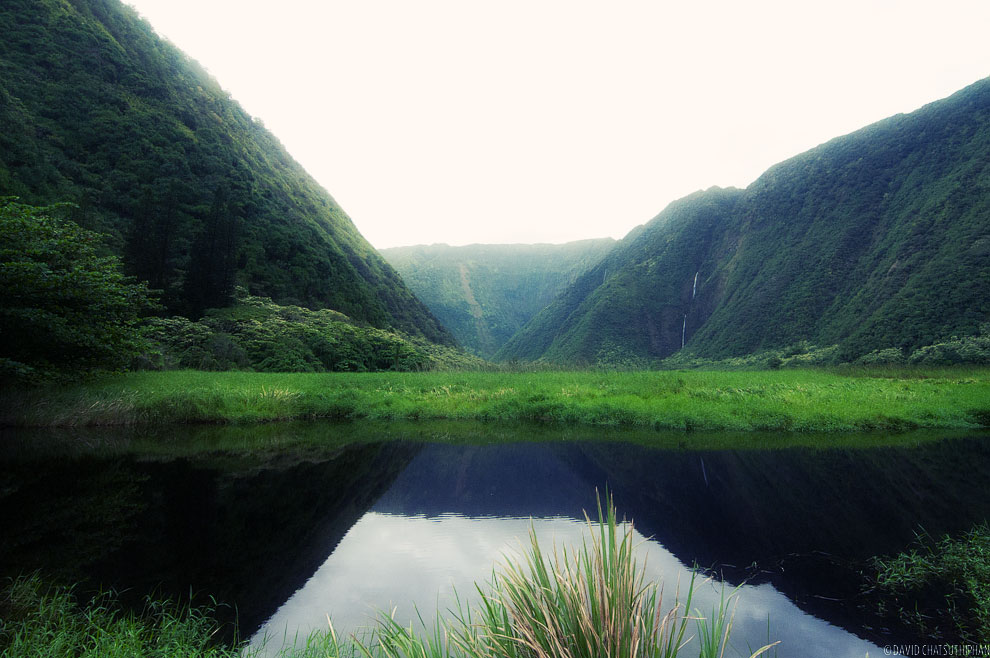
We were treated to the sight of morning glass.
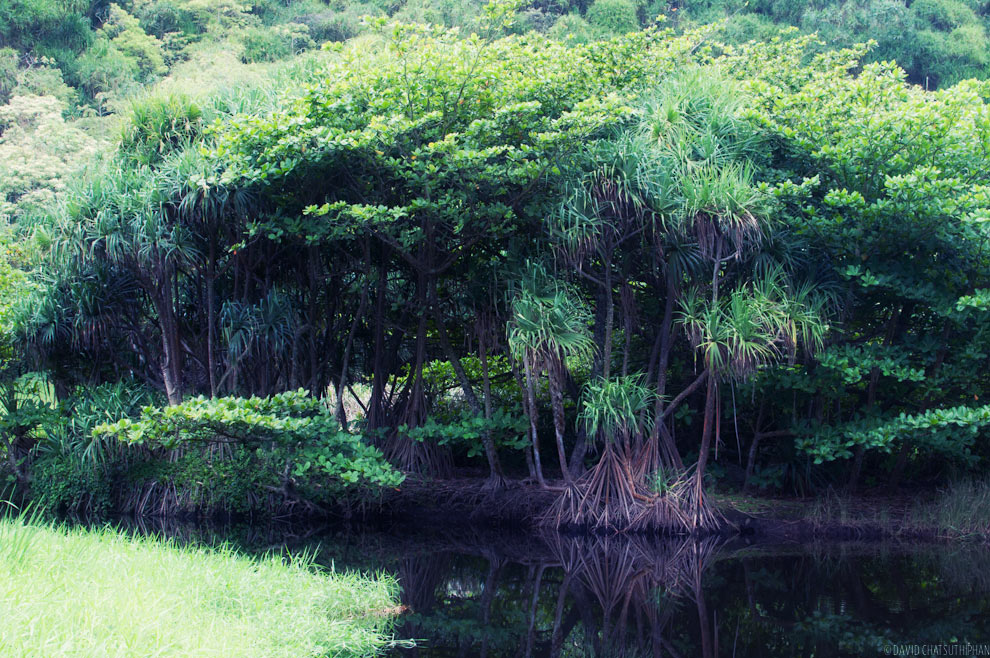
This forest across Waimanu Valley Stream is full of firewood if you can’t find it around the campsite.
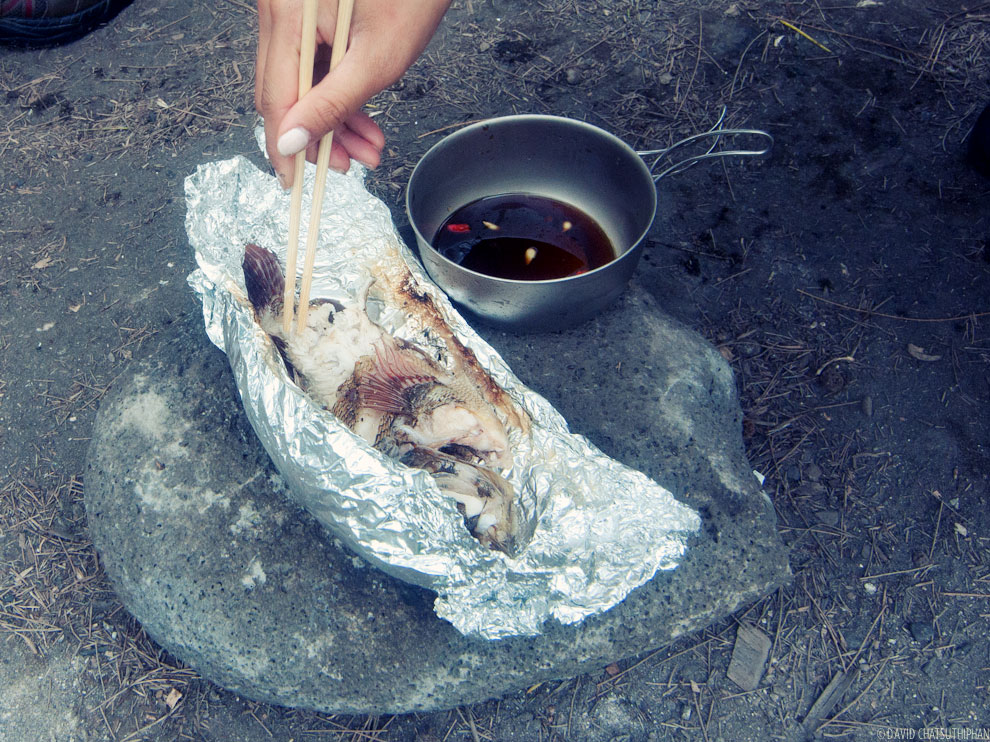
As most of us spent the second day exploring the Waimanu Valley waterfalls, Brian spent the day fishing. When we returned to camp he had four fish waiting for us. He made an amazing sauce to go with the fish with ingredients he brought over from Oahu – shoyu, hawaiian chili peppers and kalamansi. It was absolutely delicious.
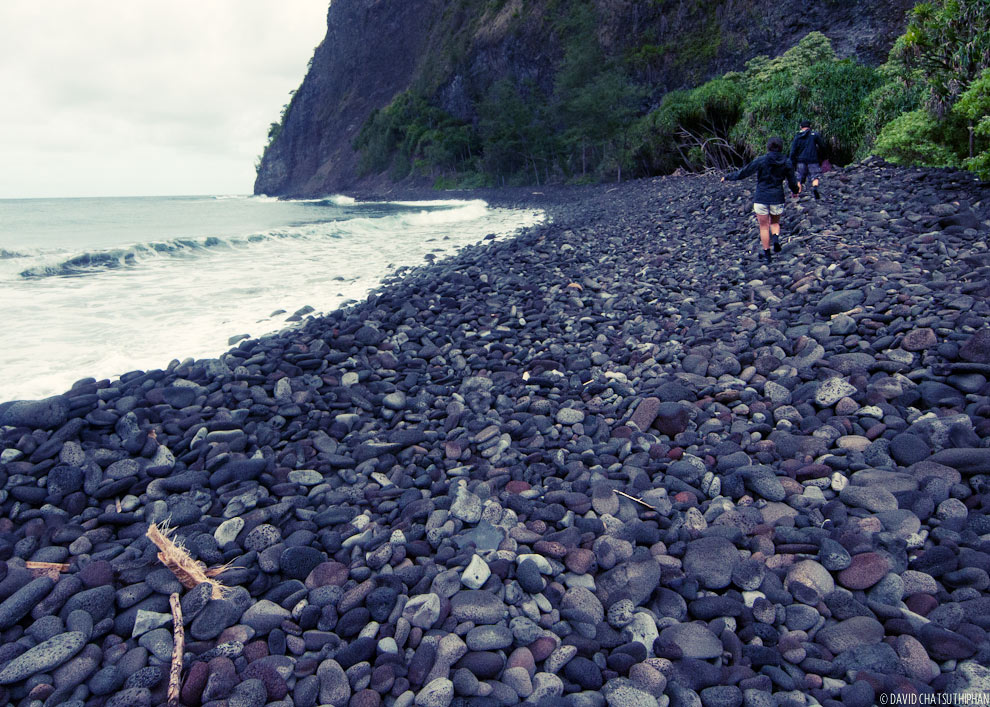
To get more fresh food to eat, the crew went out to pick opihi (a Hawaiian sea snail and delicacy).
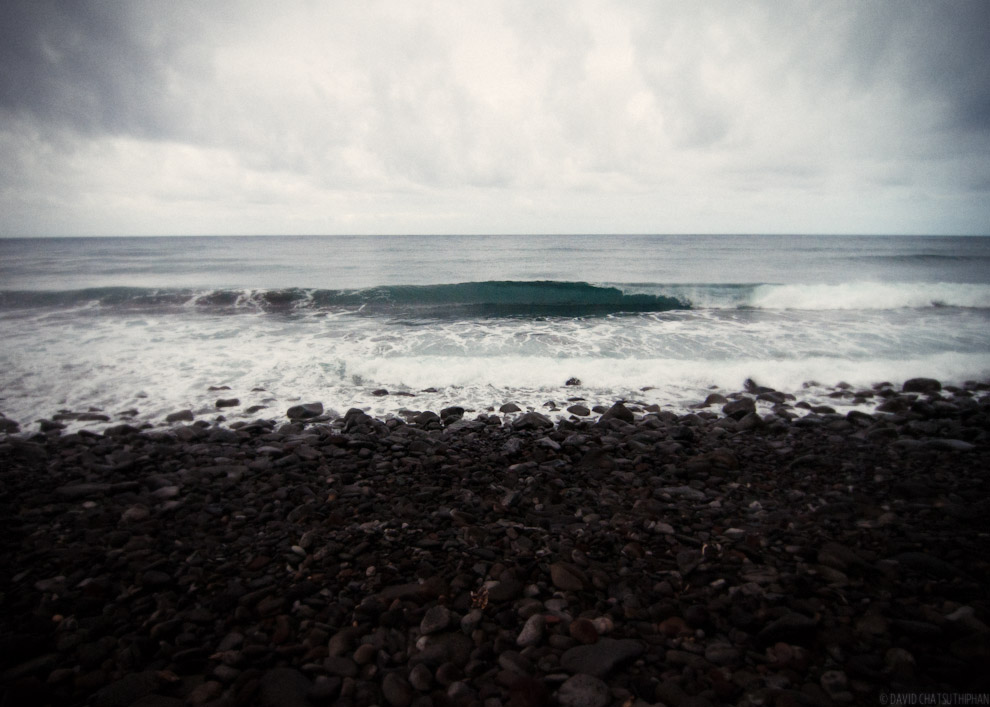
While they picked opihi, I took pictures of waves.
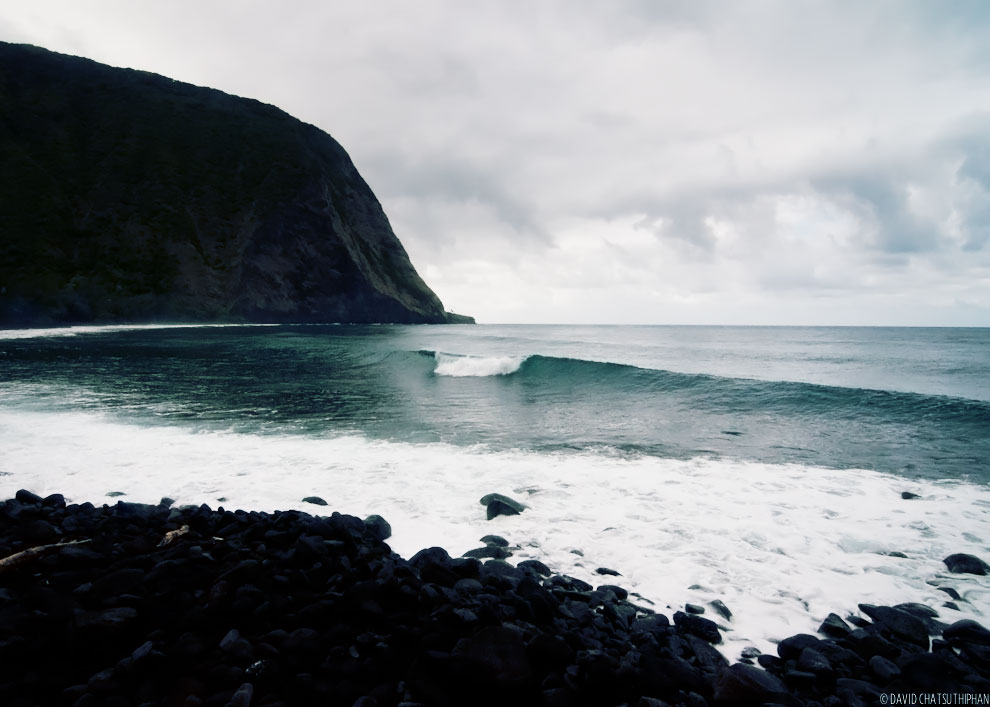
It was overcast but I didn’t mind too much as it made for some great photo ops.
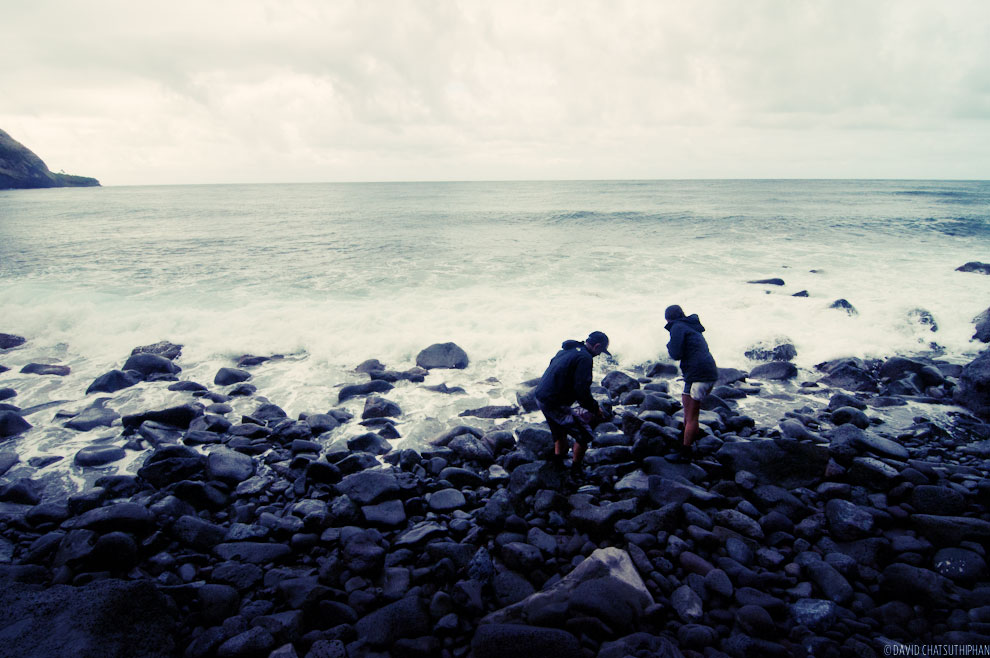
Here, Cory and Reanne pick opihi off the rocks in between waves.
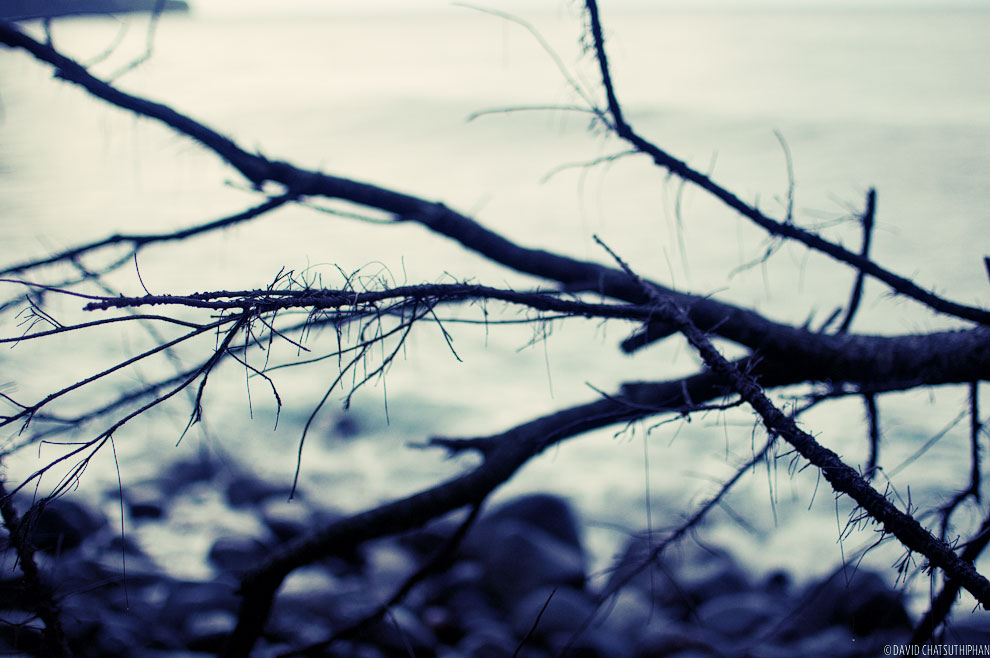
And I take more photos.
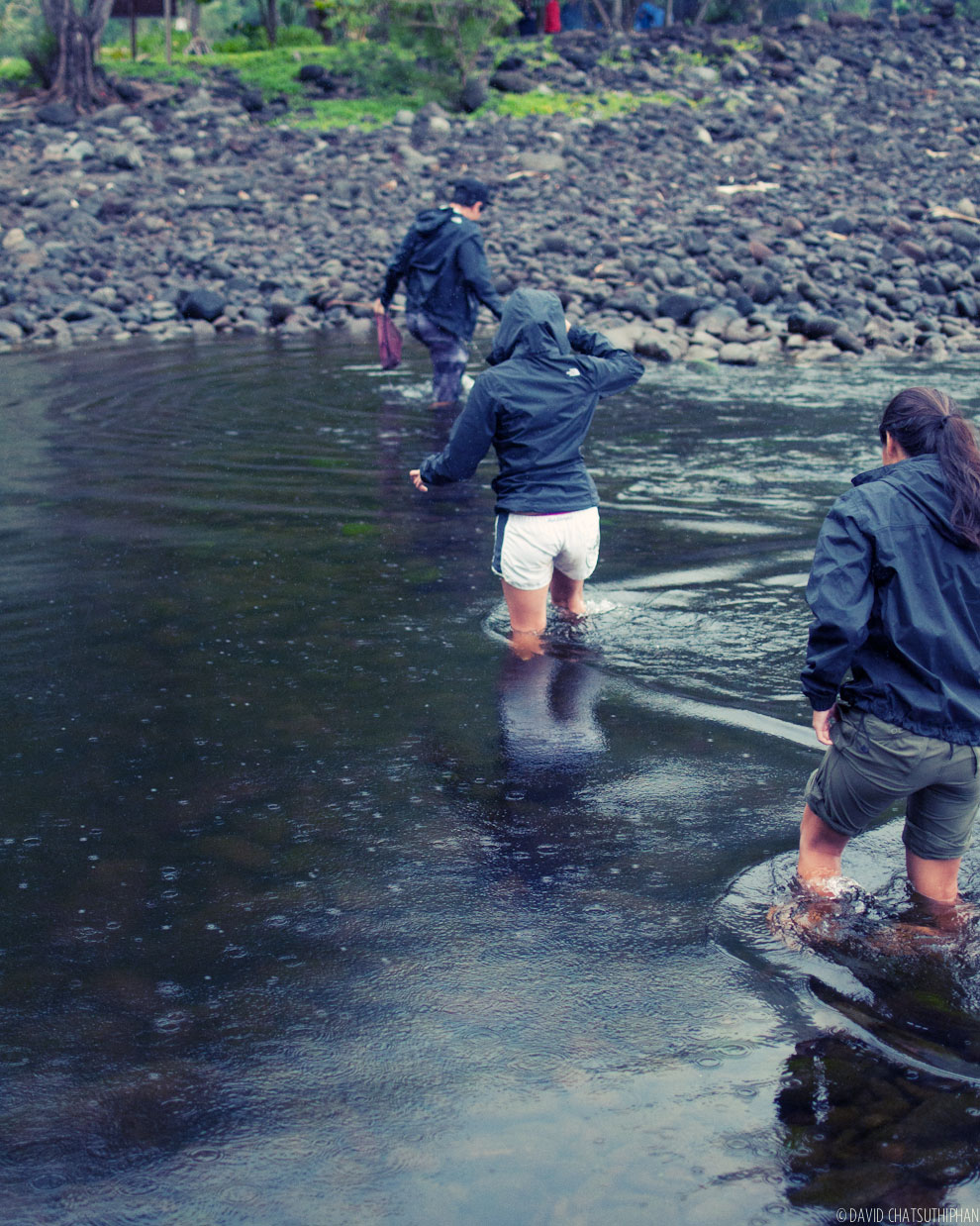
With a good harvest in hand, we headed back to camp. We got pretty good at crossing the stream.
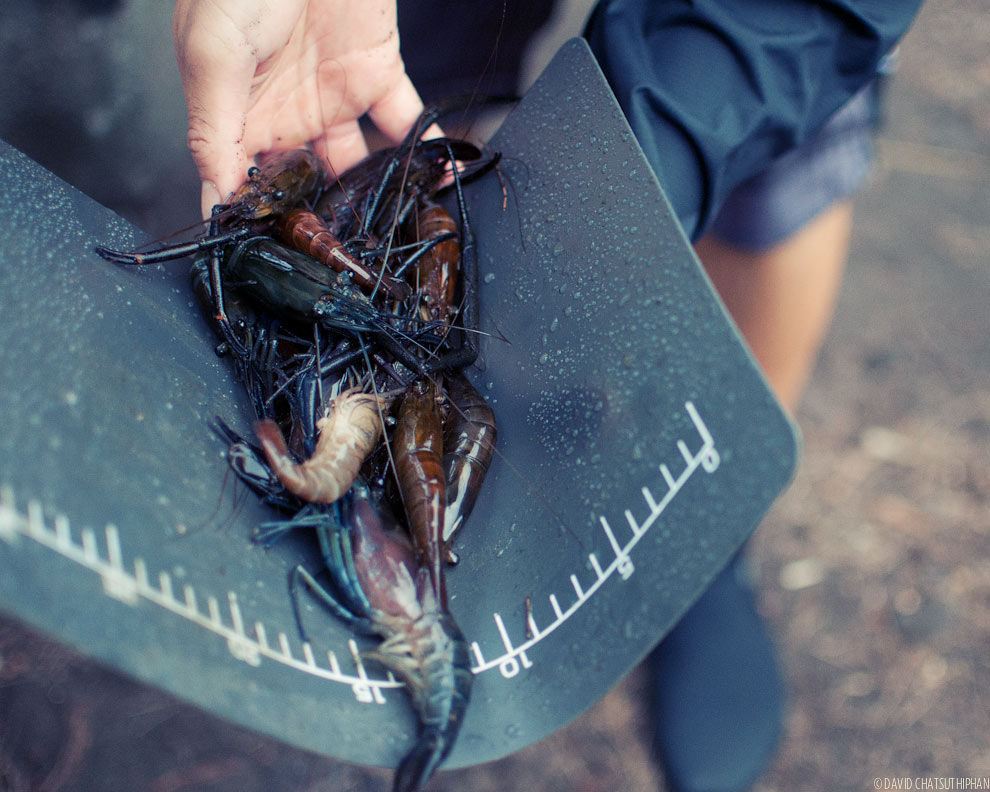
When dinner time rolled around we had plenty of food to cook up. The river prawns Cory caught in the valley, the opihi harvest and all the dehydrated food we brought.
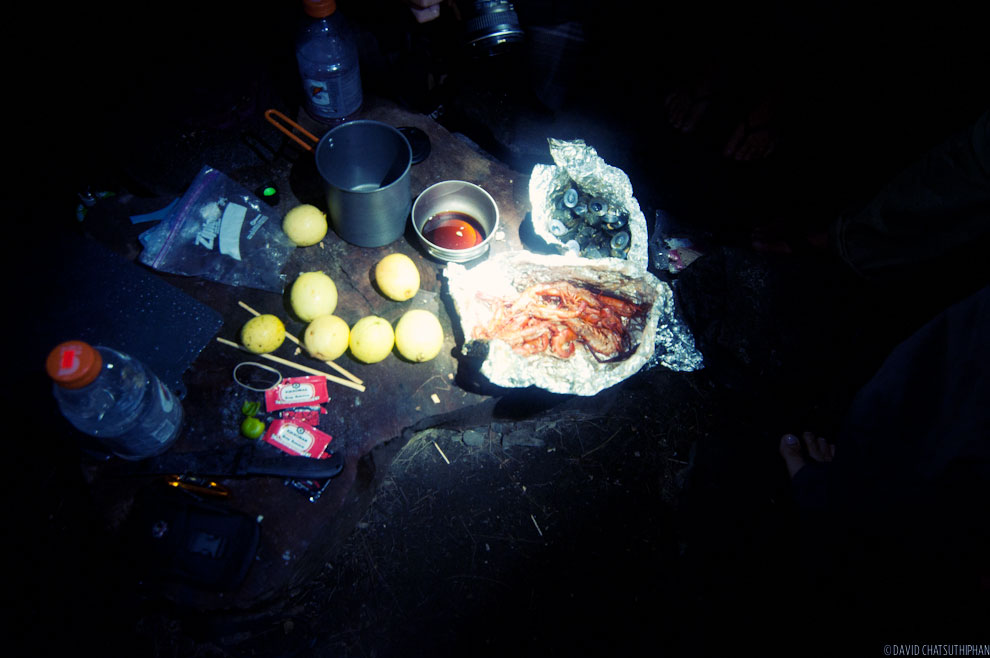
It was a feast.
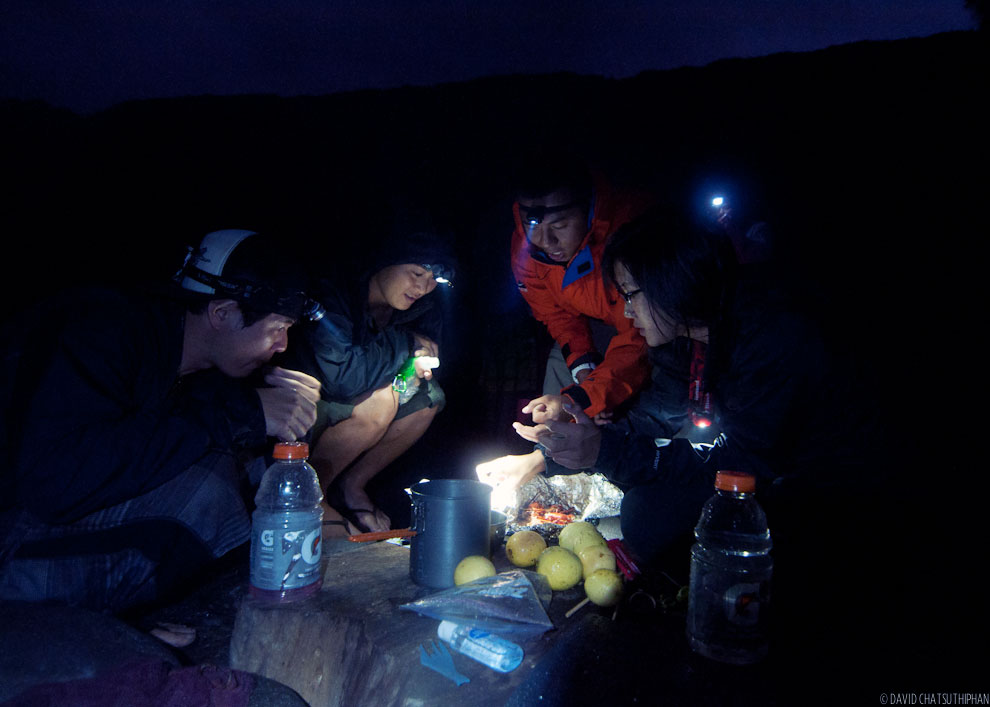
The crew cleaned up every last bite.
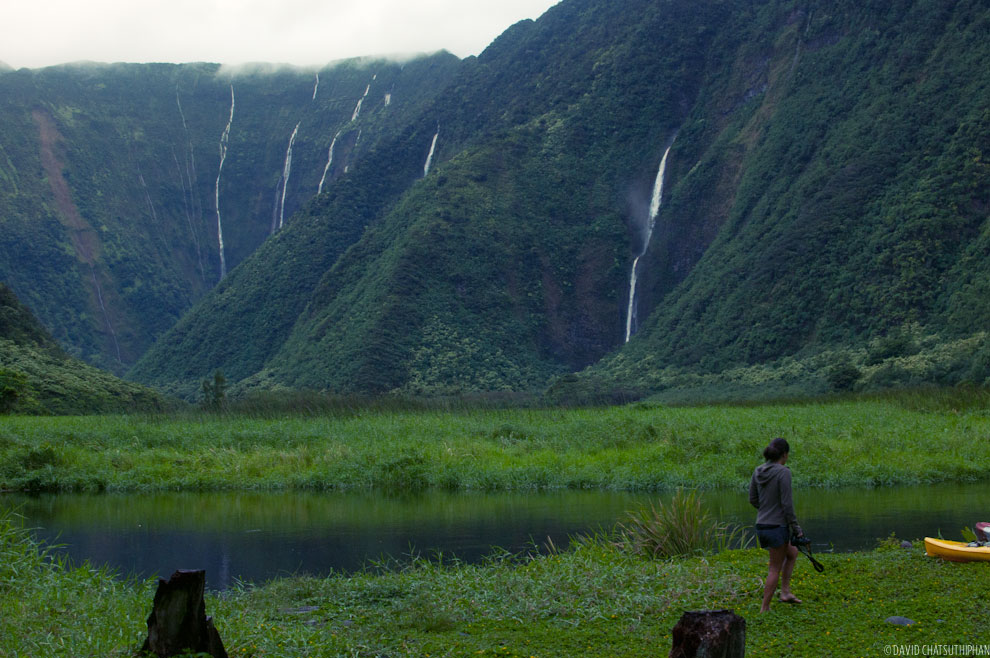
The next morning, since it rained over night, our unobstructed view of the valley really paid off.
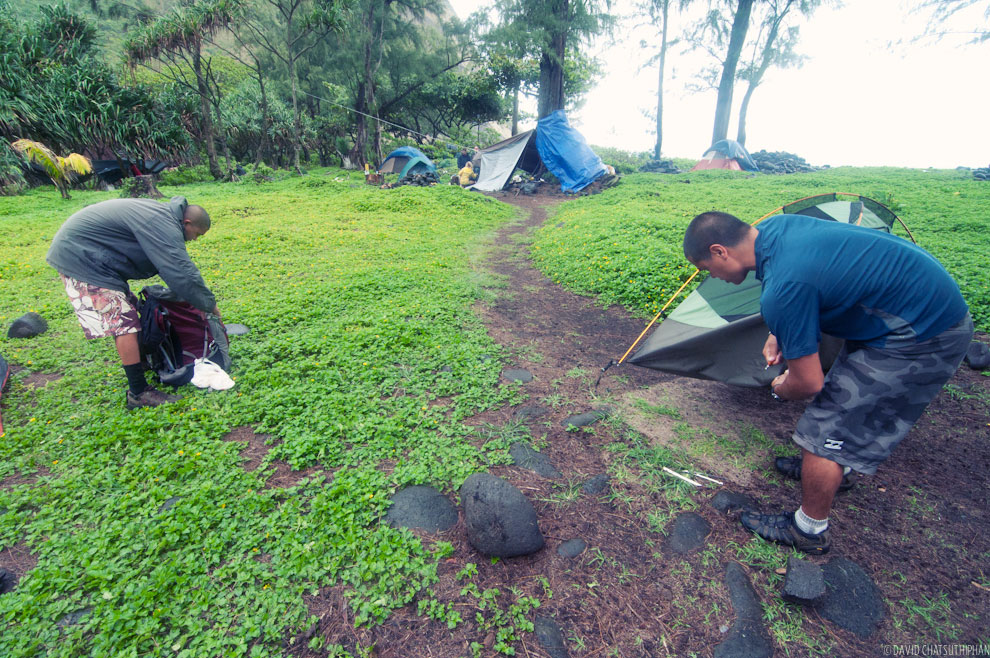
After breakfast, we broke down camp.
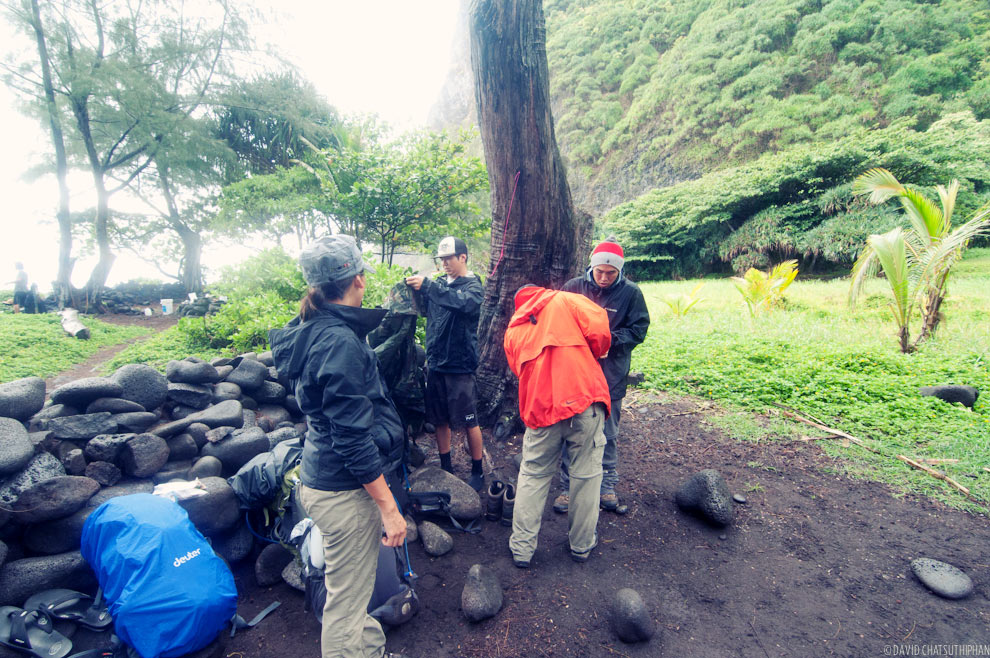
We weren’t eager to do the 9 mile hike back to Waipio Valley, but since we had a flight to catch that evening, we needed to get an early start.
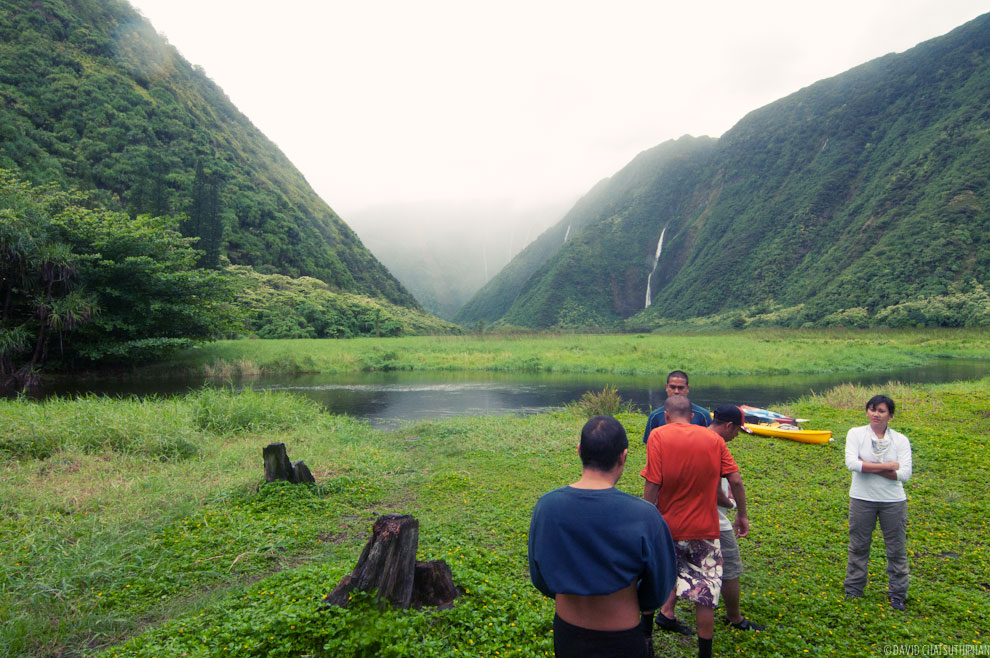
But first …
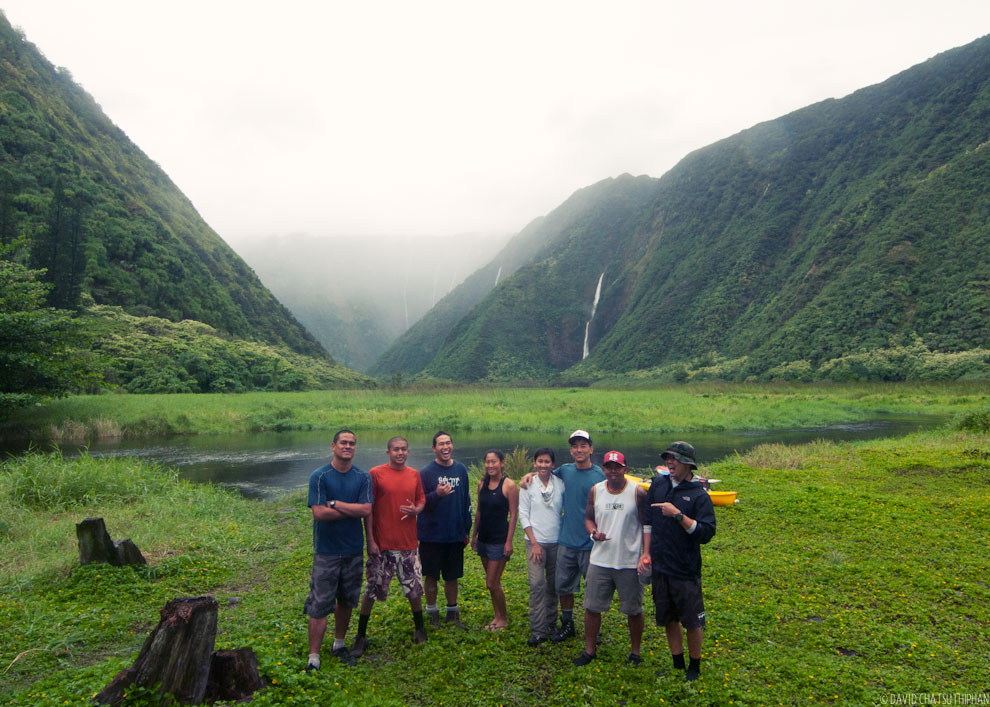
… a group photo.
Camping tips:
- Camping is by permit only. You can request a permit here.
- You can only camp here during the drier months. During rainy season, Waimanu Valley Stream could be flowing very hard an impassable.
- The water here should always be treated with chlorine or iodine tablets. Make sure you get the tablets that can kill microorganisms.
- Even in drier months, it supposedly rains in the valley almost every night. So a tent or hammock with a rain cover will make your trip more comfortable.
- You can find great info about backpacking to Waimanu Valley in this book by Stuart Ball.
The Waimanu Series
This is the third post in a five-part series on Waimanu. See more:
- PART 1: Waimanu Valley via the Muliwai Trail
- PART 2: Waimanu Valley Waterfalls
- PART 4: Waimanu Valley to Waipio Valley
- PART 5: Waimanu Valley Video Recap
See also:
- Photos and write up of Nathan Yuen’s (HTMC) backpacking trip to Waimanu Valley on HawaiianForest.com.
